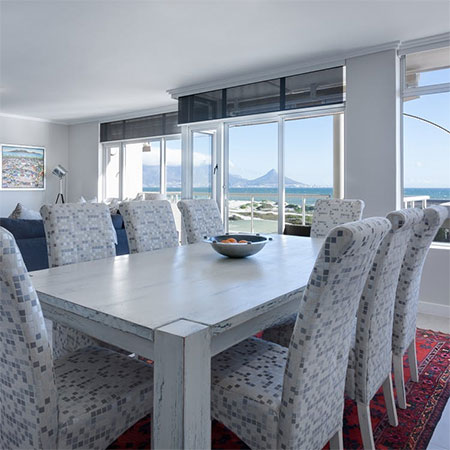Protect Furniture From Fading and Scorching Sun Damage
If not protected from UV rays, your furniture can suffer from fading and scorching caused by direct sunlight.
11/08/2020
Upholstered furniture, wood furniture and even your curtains can be damaged by direct sunlight. UV rays can fade or bleach the colour from almost all types of fabric and textiles and can cause scorching or fading on wood furniture, and even laminate floors. Our summer sun is harmful not only to our bodies but also to the contents of our homes, so make sure to take preventative action to protect the contents of your home.
We all know how intensive the sun is during the summer months, I have seen how sunlight can damage curtains and fabrics outdoors on patio furniture. But there are ways to limit or prevent damage to your belongings.
1. FIT A SUITABLE WINDOW TREATMENT
The most obvious and cost-effective solution to blocking or keeping out direct sunlight is by adding a window treatment to those rooms that receive a lot of sunlight during the day. The window treatment can be anything from sheer curtains, Venetian or vertical blinds or Roman blinds, or you can look at window shutters as a solution if you are also looking to add an extra layer of security to the property.
Window treatments are a solution but not everyone likes having a window treatment installed in their home. There are plenty of homeowners who love the look of minimal windows without any frills. So what other solutions are there for blocking out harmful UV rays?
The right window treatment will filter or block out harmful direct sunlight and protect your furniture and fittings.
Solar window film blocks out harmful UV rays and also keeps a room cool.
2. SOLAR WINDOW FILM
Having installed solar window film to my bedroom windows a few years back, I can honestly say that this installation has made quite an improvement, not only preventing fading of window treatments but also helping to cool down the room. Window film is a great solution if you prefer to keep window bare or not have to hassle with window treatments. They also provide a certain amount of privacy during the daytime.
You can purchase window films that offer varying degrees of UV filtration - even up to blocking out almost 95% harmful UV rays. Since this is what causes the most damage to furniture, fabrics and flooring, being able to block out direct sunlight will extend the lifespan of these items without making a home appear dark or by totally blocking out natural sunlight.
3. PROTECT FURNITURE WITH UV-RESISTANT COATINGS
Long-term exposure to sunlight can damage wood furniture by bleaching and discolouring the wood. The best way to prevent damage to your wood furniture is to apply a UV-resistant sealer or varnish, and there are several brands and types available.
- UV-resistant Sealer
Using a UV-resistant sealer will protect wood furniture from the harmful effects of direct sunlight, whether using for indoor or outdoor furniture. While sealer and varnish are similar, sealer is not as thick as varnish and is able to be absorbed deeply into the cells of the wood, providing much better protection for outdoor furniture.
The only downside to sealer is that it needs to be applied every 18-24 months, or as the finish degrades or fades, and this is particularly important for all outdoor furniture.
- UV Resistant Varnish
When opting for varnish for your indoor furniture, be sure to select on that is UV-resistant, as not all varnishes offer this protection. Varnish does not need to be applied regularly and furniture treated with varnish will only require attention over the years is when the finish starts to crack.
Furniture placed too close to unshaded windows is at risk of sun damage.
4. MOVE FURNITURE AWAY FROM WINDOWS OR GLASS DOORS
The only way to protect wood or upholstered furniture from the effects of damaging sunlight is to arrange the room in such a way as to limit the amount of damage. Avoid placing furniture directly in front of an uncovered window, or in those areas that receive a lot of direct sunlight during the day.






